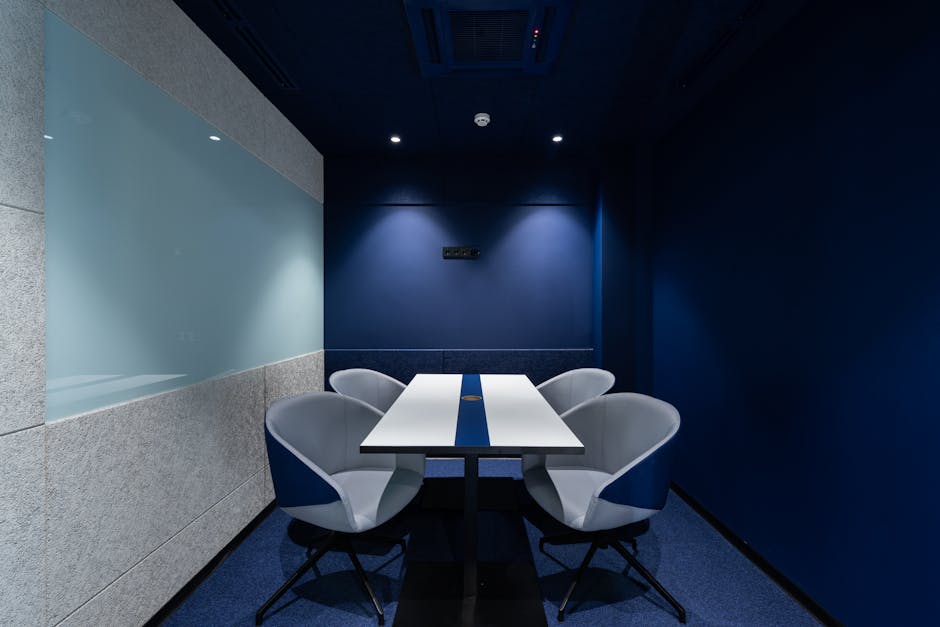Articles on Workplace

Creating an Office Seating Arrangement Your Employees Will Love
A well-designed office seating arrangement can significantly impact employee satisfaction and productivity. This article explores six tips for creating a workspace that encourages collaboration, flexibility, and comfort, ultimately leading to a workplace your employees will love.
By Lucas Hamilton

Unlocking the Power of Flexible Office Spaces: 5 Tips for Optimizing Your Workplace
In today's dynamic work environment, flexible office spaces are becoming increasingly popular. This article explores the benefits of flexible workspaces and provides 5 actionable tips for creating an adaptable, efficient, and collaborative office that empowers employees and drives business success.
By Sophia Marshall

Unlocking the Power of Technology: How It's Transforming the Modern Workplace
Technology has become an integral part of the modern workplace, transforming the way we work and collaborate. From streamlining processes and boosting productivity to enhancing security and employee experience, the benefits of embracing technology in the office are numerous. This article explores the key advantages of leveraging technology in the workplace and how it can help your company thrive in today's digital age.
By Nora Bradford

The Ultimate Workplace Real Estate Checklist: Finding the Perfect Location for Your Business
Choosing the right location for your workplace is just as crucial as the building itself. This comprehensive checklist helps you navigate the process of finding the perfect spot for your growing business, ensuring accessibility, convenience, and a thriving professional environment.
By Evelyn Parker

Why the Workplace Matters More Than Ever in a Distributed Work Model
Despite the rise of remote work, the physical workplace remains vital for businesses operating in a distributed work model. It enables face-to-face communication, collaboration, community building, and a sense of purpose among employees. Creating a consistent yet unique workplace experience across global offices is key to attracting and retaining talent.
By Ethan Montgomery

Why Workers Are Hesitant to Return to the Office: Addressing the Top 5 Concerns
As companies bring employees back to the office, many workers have concerns about the transition. This article explores the top 5 reasons employees are hesitant to return and offers advice from workplace leaders on how to address these issues, creating a more comfortable and efficient workplace.
By Lucas Hamilton

Workplace Heroes: 3 Things Your Admins Want You to Know About Their Job
Administrative professionals are the unsung heroes of the workplace. From managing calendars to designing office spaces, they play a crucial role in keeping things running smoothly. In this article, we explore 3 key things admins want you to know about their job and how you can better appreciate and support them.
By Charlotte Reed

9 Types of Workplace Threats You Need to Know About
Workplace security threats are becoming more prevalent and sophisticated. From cyber attacks to natural disasters, it's crucial for businesses to identify and prepare for potential risks. This article explores 9 types of workplace threats and provides actionable tips to safeguard your organization.
By Nathanial Sterling

User Experience (UX) Technology: A Top Priority for Workplace Technology
User experience (UX) is the key to ensuring that employees are able to use workplace technology effectively and efficiently. By prioritizing UX, organizations can improve employee productivity, satisfaction, and retention.
By Nathanial Sterling

Workplace Whiz Ep.3: AI is Taking Over, but That's Actually Great News for Workplaces!
AI is rapidly transforming the workplace, and that's a good thing! In this blog post, we'll explore the many ways that AI can benefit your organization, from automating tasks to improving decision-making. So, if you're looking to stay ahead of the curve, read on to learn more about the exciting world of AI in the workplace!
By Isabella Hunter

10 Creative Workplace Design Ideas to Boost Your Office Experience
In today's dynamic workplace, fostering a positive and inspiring work environment is essential for employee well-being and productivity. Embrace these creative design ideas to transform your office into a vibrant hub of collaboration, creativity, and engagement.
By Lucas Hamilton

The Traditional Office Culture Is Over: It's Time to Build a New and Better One
The traditional office culture is dead. Long live the new office culture! In this blog post, we'll explore the reasons why the traditional office culture is no longer working and what we can do to create a new and better one.